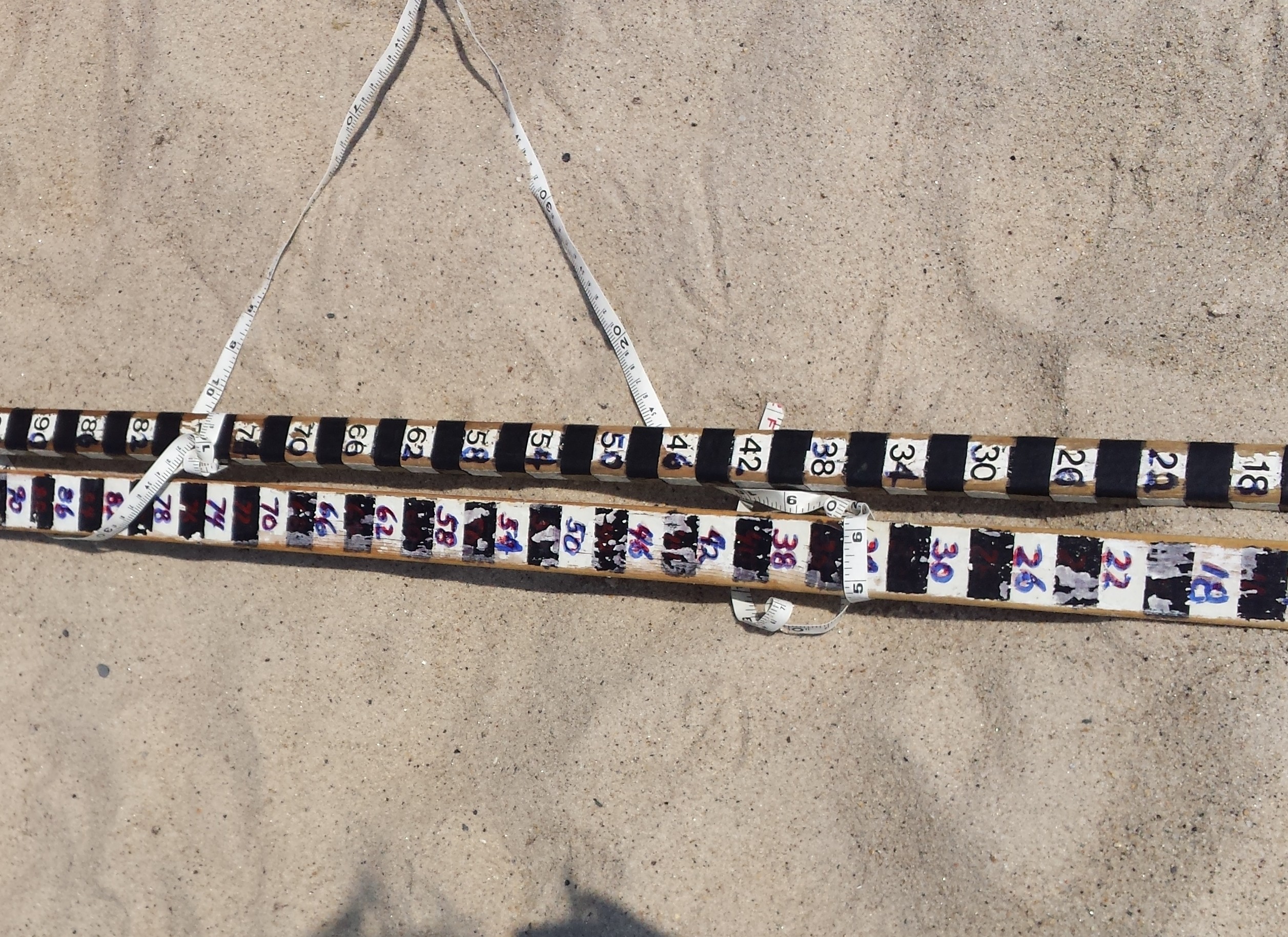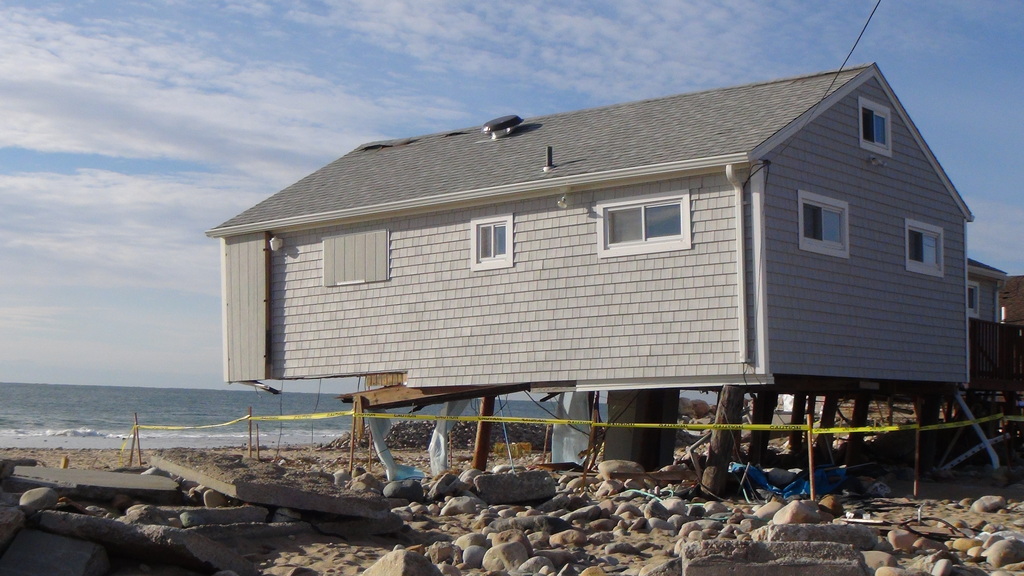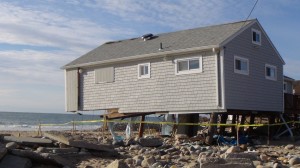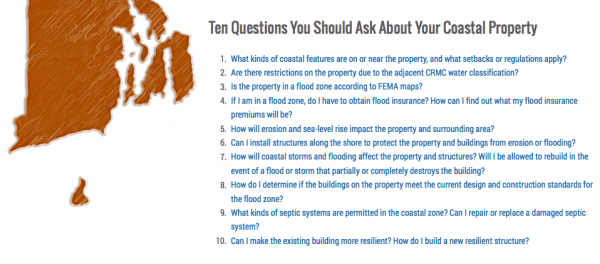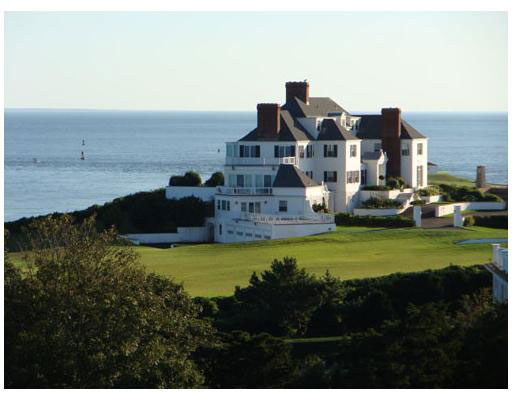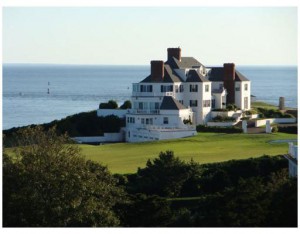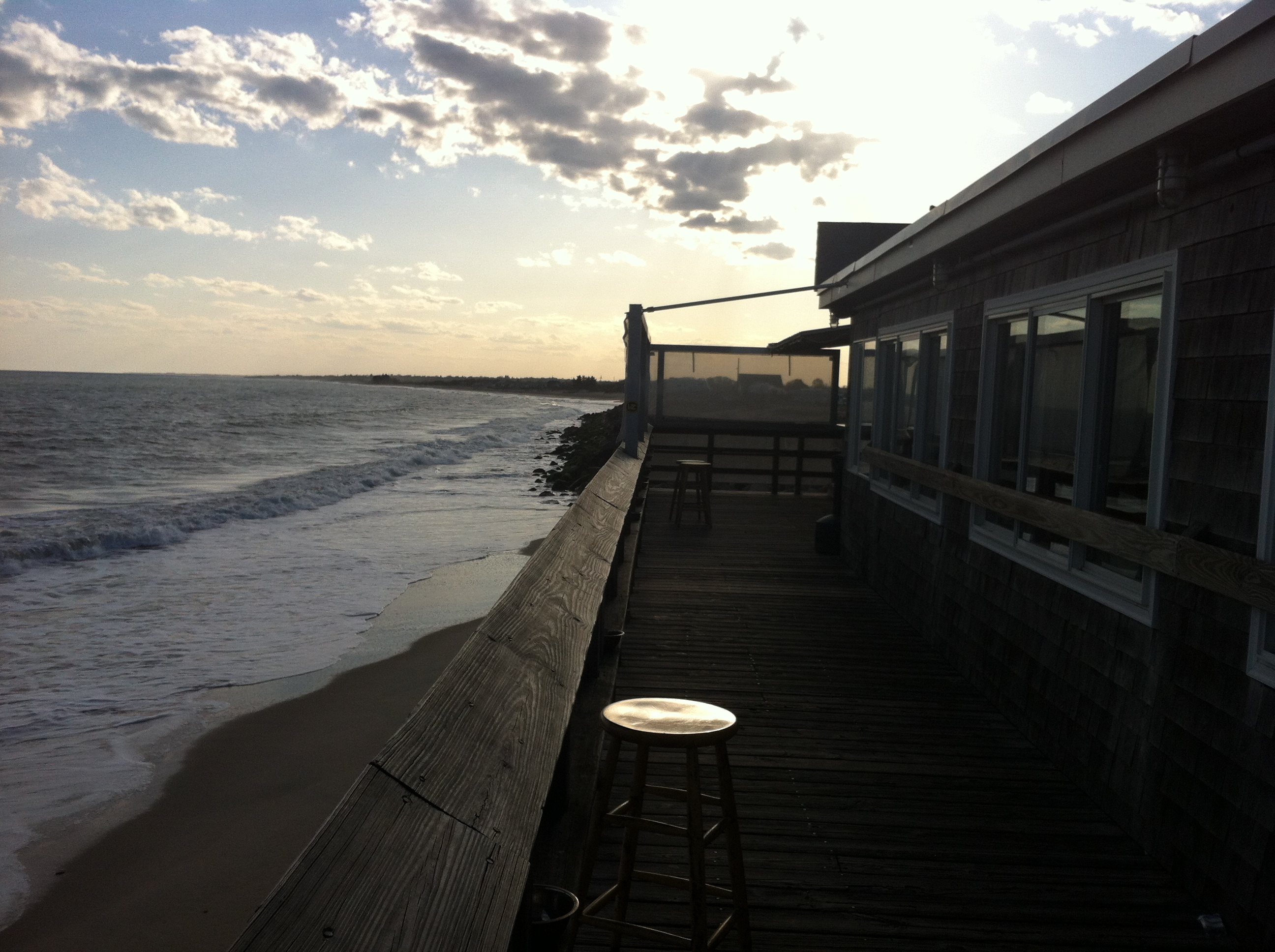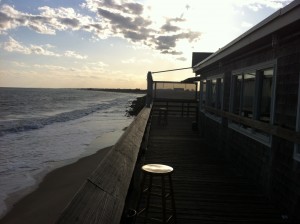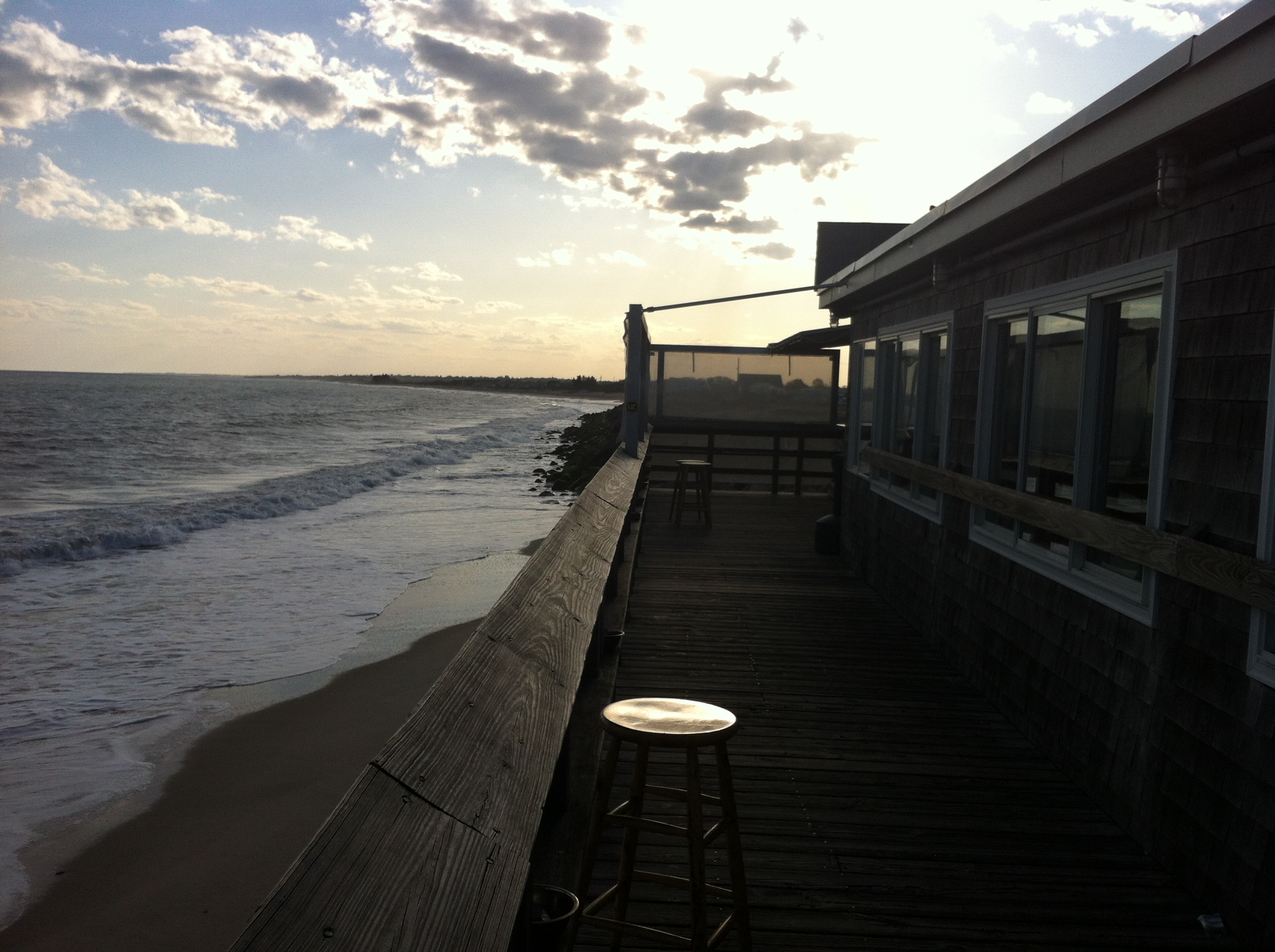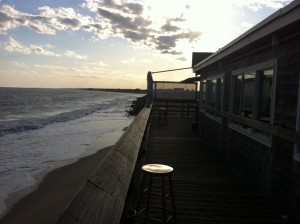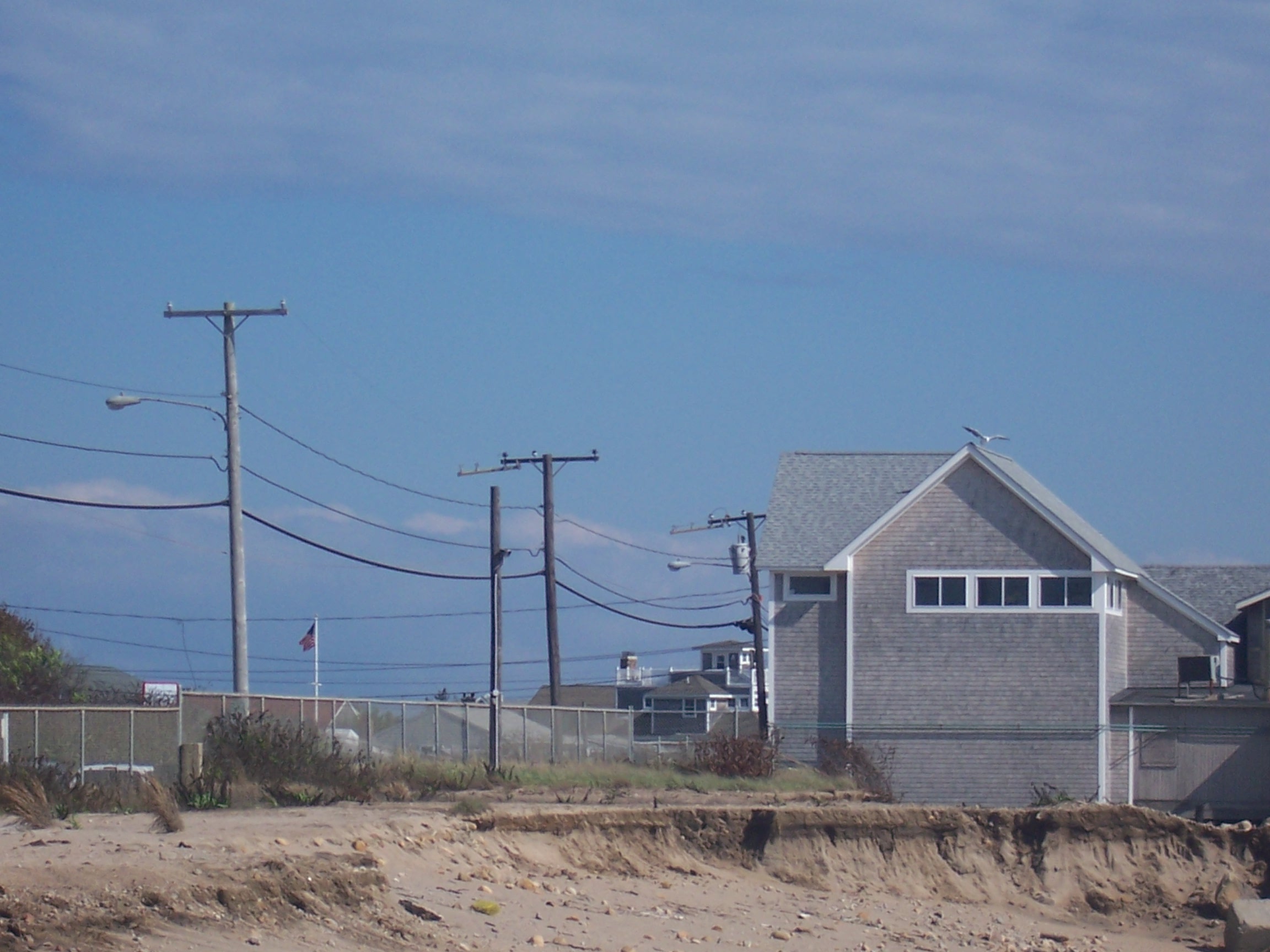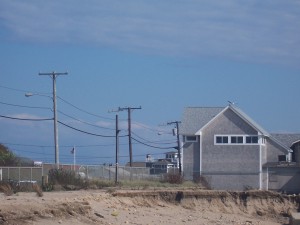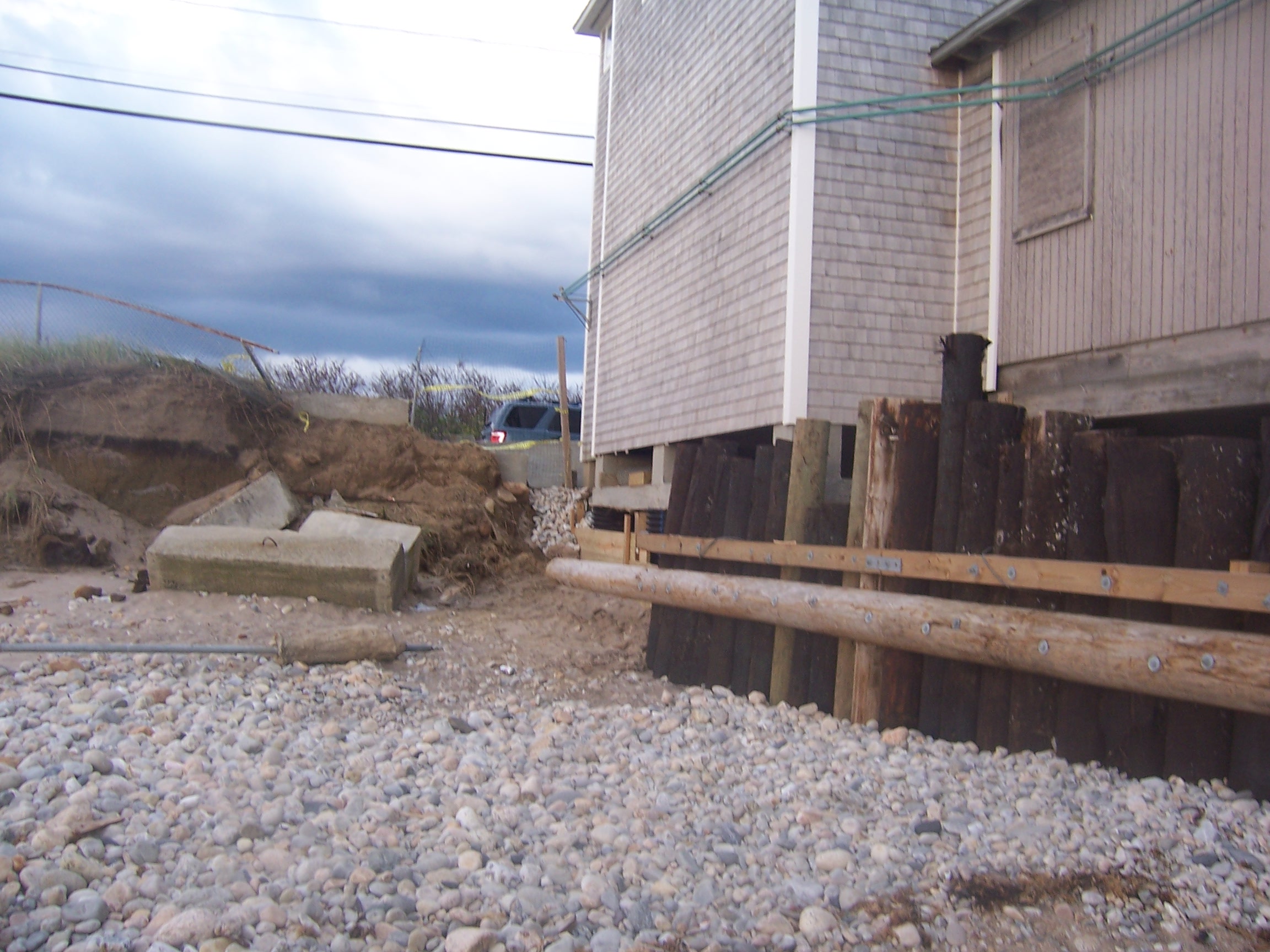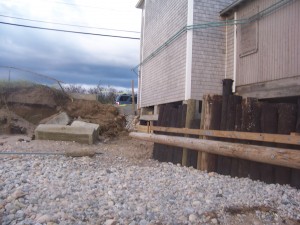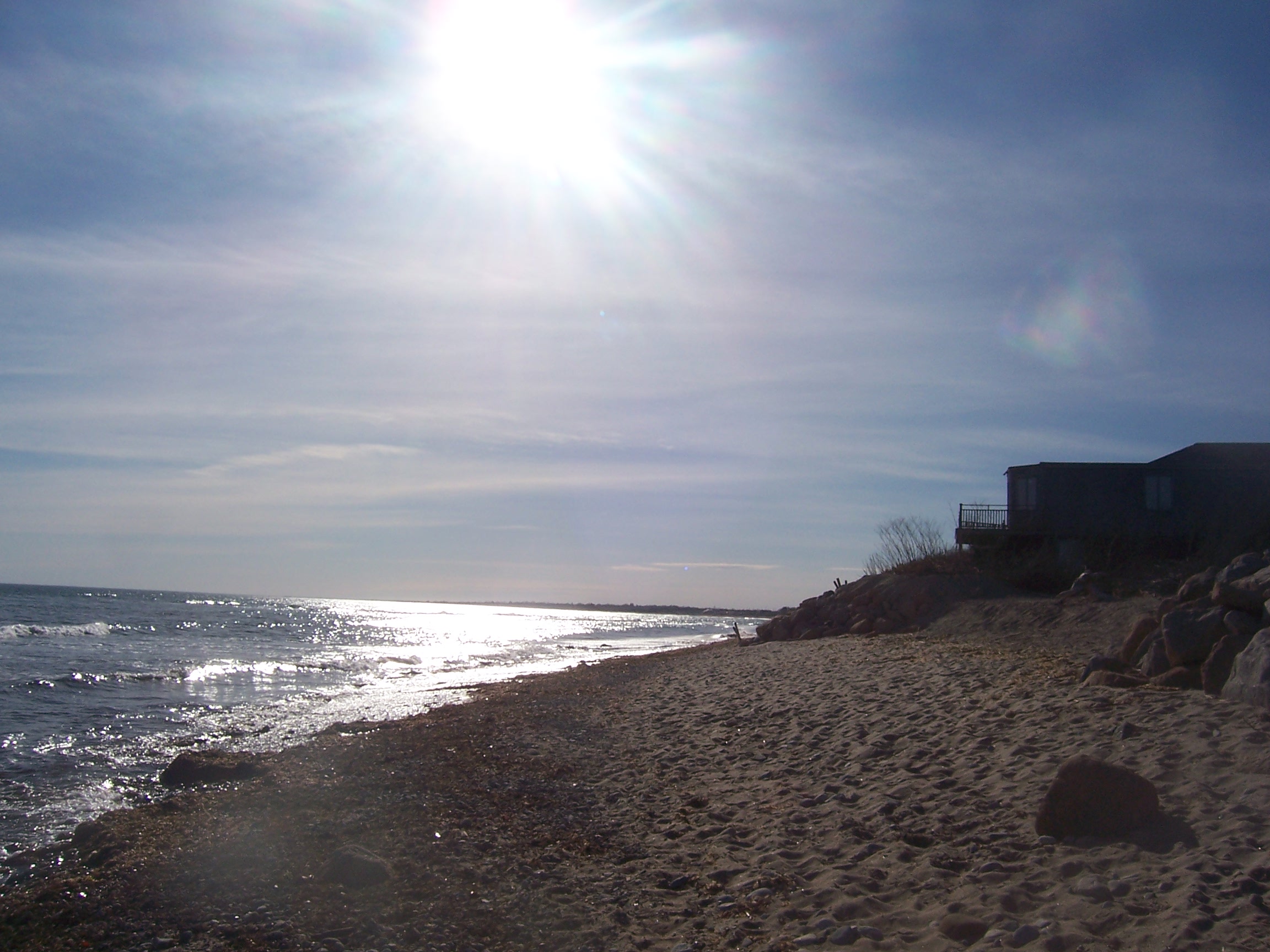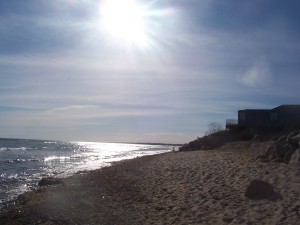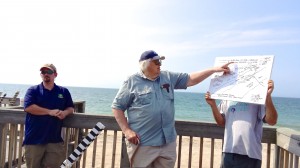
Matunuck – Armed with just two sticks and a string, a group of 15 environmentalists took to South Kingstown Town Beach to tackle one of the biggest issues facing Rhode Island: eroding barrier beaches.
“The reason we can hold this kind of workshop is that the technique we use to actually monitor, to create these (profiles) is with a very simple technique,” said Bryan Oakley, University of Rhode Island graduate and Asst. Professor of Environmental Earth Sciences at Eastern Connecticut State University. “We don’t have anything that costs more than $30 to build these sticks. It literally is as we call it two sticks and a string.’ ”
The training is sponsored by the Coastal Resources Management Council in collaboration with the Rhode Island Geological Survey at URI, the beach gathering was intended to encourage volunteers to actively participate in monitoring changes and collecting data on the state’s barrier beaches.
The Emory Board Method
“We like it because it doesn’t require a lot of fancy equipment, “ said Oakley. “So in this day and age of funding, we can go out and set up a new profile for very little money. It’s just time to go run the data.”
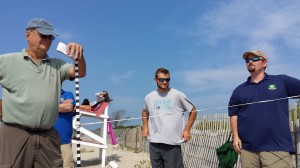
Dubbed the Emery Board method, the profile technique was formulated by the late Kenneth O. Emery, (K.O.), Scientist Emeritus at the Woods Hole Oceanographic Institute.
“Anybody can learn how to do it. It’s just a matter of consistency and really practice,” said Oakley. “You get better, you get faster, you get more efficient the more you do it.”
“It’s a field driven technique, we like that because its easy to sit and look at GIS and look at long-term changes, to the shoreline, but a lot of the detail is, you’re out here the day after a storm, you collect the data and you can say something about how much the shoreline went away,” he said.
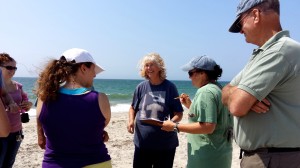
Assisting the two professors in instruction were Janet Freedman, CRMC Coastal Geologist and Rob Hollis, URI Graduate Student.
The two sticks method was also the more practical choice for volunteer profiling as the more technical, kinematic GPS systems cost anywhere from $30,000 to $60,000.
Volunteers were also given tracking, plotting and sketching instruction for future use on their chosen beaches across the state.
Spearheading the training was Dr. Jon Boothroyd, State Geologist and Research Professor Emeritus at URI’s Rhode Island Geological Survey.
“Things are about to happen here,” said Boothroyd. “They are already happening.”
Pointing to South Kingstown Town Beach, where Boothroyd established a profile in 1996, he said, “This is a highly erodible place. It’s eroding at the same rate that some of the beaches are eroding and even more. And we think, we don’t know yet, and we hope the SAMP will shed some light on it, that there’s wave refraction around the shallower water out here. That’s a focus here.”
“The CRMC asked us to start a profile here in 1996,” Boothroyd said.
“They built this part in 1992,” he said of the town beach’s pavilion. “And they built the shore-parallel boardwalk in 1994. Almost as soon as it was built, people started noticing that the scarp and the bluff were approaching the boardwalk pilings.”
Taking care to school participants on the need for beach profiling, Boothroyd and Oakley walked the group through the history and science of the eroding shoreline. Before heading out onto the beach for hands-on training, the educators presented a basic foundation of changes and profiles generally seen on Rhode Island beaches.
Recovery takes time
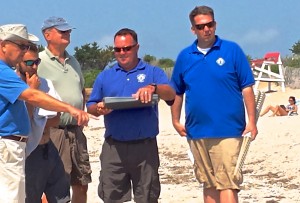
The South Kingstown Town Beach is serving as the subject because it provides both historical and current change lessons in geology and meteorology.
“You know that the storms pass off to the east – that the wind comes in from the northeast – and we have what is known as Nor’easters,” said Boothroyd. “Everybody calls an extra- tropical cyclone a Nor’easter, but here if the storm track passes to the west, we have winds coming in from the southeast, so we really have So’easters on this coast. “[It] depends on which way your coast faces.”
Using Superstorm Sandy as a severe weather gauge, Boothroyd explained Sandy’s path and turn away from the RI coast.
“If Sandy hadn’t turned, we’d look like New Jersey. Not everyone believes it, but we dodged a bullet.”
The historical data for the beach, chronicled the changes since Sandy brought the sea ashore in Matunuck.
“Without this data, we wouldn’t know that the bluff here went back 7 meters during Sandy – the crest of the bluff,” said Oakley.
Engaging the participants, Oakley pointed to the scarp (slope formed by wave action) west of the pavilion. “So that scarp you see down there went back, 23 feet give or take during one storm.”
Natural replenishment and erosion is a long process, with intermittent storms and activity forestalling and contributing, in either positive or negative processes, the construct of the barrier beach.
“We’ve found over the years that there’s a cycle, although I’d hate to call it a cycle, but there’s a pattern,” said Boothroyd. “If you start with a very large beach with a big berm, then you have a moderate storm, severe storm, and post-storm recovery, over time it comes back. But it takes actually years to come back, so we’re still recovering here after Sandy.”
Joining the training were volunteers from Middletown, Little Compton, South Kingstown, Charlestown and Narragansett.The Narrow River Preservation Society in Narragansett, Salt Ponds Coalition, 2nd Beach, Middletown and the South Kingstown Conservation Commission were represented.
CRMC may offer additional beach profiling training sessions in the future, according to Laura Dwyer, spokesperson for CRMC.

